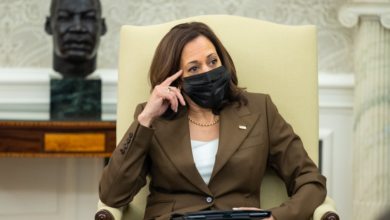December jobs report show that the second stimulus was too little and too late
The Labor Department’s recently released jobs report shows that the economy lost 140,000 jobs in December. That is the first month since April that there were job losses. The unemployment rate stayed constant at 6.7%. The second stimulus package was not approved and signed until the end of December. That package was too little and too late.
The economy started 2020 in a very strong position. Many economists were forecasting that 2020 would see the best economic growth in two decades. Then COVID hit. The economy was almost completely shut down from mid-March until the end of April.
That plunged the economy into a very deep but short-lived recession. The March decline was so great, that the entire first quarter had –5% growth. The April decline was so great that the second-quarter growth rate was -31.7%. Growth in the second quarter could actually have been worse, but the federal government acting quickly.
In May, Congress passed a massive nearly $3 trillion stimulus package. Also in May, the economy began to re-open. Those actions allowed the economy to recovery very quickly. The unemployment rate which peaked at 14.7% in April fell dramatically.
Third-quarter GDP growth was more than 33% so that by August the unemployment rate had fallen to 8.4% as nearly 11 million of the more than 22 million unemployed workers returned to their job.
But in September the robust V-shaped recovery that started in May began to sputter. Elected officials from both parties recognized the need for a second stimulus package. The debate concerned the size of the package. Members of the House of Representatives wanted more than $3 trillion. The Senate, concerned about the deficit, wanted to keep the number under $1 trillion. The President wanted something in the $1.2 to $1.4 trillion range.
Politics also played a role. The Democratically controlled House of Representatives did not want to help President Trump’s re-election chances so they held firm, noting they would reduce their demand to $2.2 trillion but no less. The Senate would never approve that. The President was willing to compromise and would go as high as $1.6 trillion. No compromise could be reached.
Finally, after the election and some poor jobs numbers in September, October and November, the House said they would go along with a smaller amount, as low as $900 billion. That amount was finally passed at the end of December.
By the time the additional lockdowns in about a dozen states that account for nearly 40% of GDP, were fully implemented in December, economic growth slowed. While most economists are forecasting about a 5% growth rate for the fourth quarter, the latest jobs numbers clearly show that the second stimulus package was too little and too late.
Had Congress acted in September rather than waiting until the end of December, the V-shaped recovery would have continued. Now we see much slower growth.
The prospects for the first quarter of 2021 look dim. The spike in the number of COVID cases and a new administration which has vowed to take a tougher stand against the virus, likely point to weak growth. The hope is that the second stimulus package, which will inject hundreds of billions of dollars into the economy, will be enough to increase economic growth.
Of course, the best solution to returning the economy to some normalcy is to control the virus so that the economy can completely and safely re-open. Based on projections that could occur sometime in May or June when more than 70% of Americans will have been vaccinated. At that point, the economy would be poised for more rapid growth.
Assuming the new administration does not take policy actions that appear to cure perceived social injustices but really hurt economic growth, the second half of 2021 could see growth rates in the 6% to 8% range. The underlining fundamentals of the economy were strong prior to COVID and could again be strong once COVID is completely controlled.
In the meantime, government policy should focus on growth. President-elect Biden’s policies of raising tax rates for all Americans, adding layers of government regulations and redistributing income away from people that earned it and toward people who haven’t earned it, will slow economic growth.
We will have to wait to see how politics, economics and the new administration interact in 2021.



